The 9 Customer Journey Stages and Why They Are Important
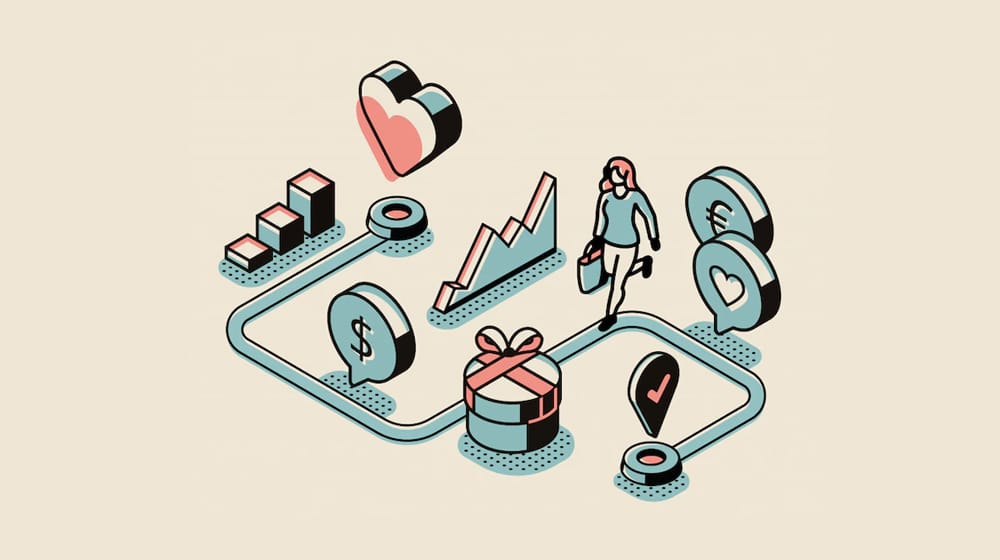
In broad strokes, the customer journey is all the steps a person takes to become a customer. This path encompasses everything from realizing they have a problem that needs solving to buying and using your product to solve that problem.
Knowing this customer journey is vital because it allows you to focus your marketing efforts on different stages of that journey. It's similar to the sales funnel but more variable; everyone takes their unique path through your customer journey. Each step of the customer journey can be categorized within the sales funnel, but each customer has their way of making it through those stages.
Think about this: when you call a business, you must go through a phone tree to be directed to the right place. Or, you have to explain yourself to a receptionist, who has to figure out who to send you to. Or, you talk to a CS rep in a call center, get transferred up the chain three times, and still don't know if you'll ever get your issue solved.
If the business knew your stage in the journey, they could ensure that the people you contact the first time are the right people to talk to.
 30 Second Summary
30 Second Summary
You need to understand how customers move from discovering a problem to becoming loyal advocates of your solution. You'll find customers take different paths with 3-9 stages, starting with realizing they have a problem and ending with potentially promoting your product. When you know where each customer is in their journey, you can give them exactly what they need - from educational content to support to loyalty rewards. You have to match your marketing, content and service to each stage they're in.
The Phases of the Customer Journey
When you define a customer journey, you'll find a bunch of guides and think pieces with different outlines for the customer journey. Some list four phases, some five, some six, and even more. What's going on?
The barest minimum customer journey has three stages: before the sale, during the sale, and after the sale. Sounds simple, right? It's a straightforward definition, but where do you draw the lines?

You can get quite granular with this. For example, here's a nine-stage example:
- Someone who isn't a customer and isn't even aware of your business yet discovers a problem they need to solve. This example can be anything from too much static in their laundry to a newfound dietary restriction to a business problem.
- The non-customer, aware that they have a problem, starts to look into possible solutions. Along the way, they discover you as one potential solution to their problem.
- This non-customer isn't sure they want to go with you to solve their problem. After all, if there's a company that might fix their issue, there's probably more than one. So, they carefully analyze your company to see your selling point and how well you can solve their problem.
- Still in the research phase, the non-customer looks at competitors and other potential solutions to their problem. They may not have even decided between buying an eCommerce product or rigging something DIY yet, but this is exploring their options. They may be signed up to your mailing list or become a fan on social media, but they are not yet a customer.
- The customer, through their research, has made two decisions. The first is to buy a competitor's solution, and the second is to buy your solution. They are now a customer.
- You don't take money, ship a product, and wash your hands of the transaction, do you? Of course not. In this stage, you engage with the customer – passively and actively – to onboard them into using your product. This process can involve anything from an instruction booklet in your product to a drip campaign offering usage tips.
- The usage stage is where the customer decides whether or not the investment was a good one. This time is also when they may reach out for support or leave a review. We've all had times when we make a purchase, but it takes weeks or months to get around to actually using it.
- This step is the ongoing relationship you have with an existing customer. Depending on your business, the relationship can be an ongoing subscription (or an increased service plan), or it can be a repeat purchase of a consumable, or it can be purchasing add-ons and extras (lenses and cases for a camera, for example.)
- Fully satisfied with both your product and your support, this customer is now loyal; they recommend you to their friends and strangers online, they advocate for you, and if you offer it and they're in the proper position, they may sign up to promote you via an affiliate program or referral system.
Several of these can be condensed, you may skip some, and some have dramatically more extended amounts of time a customer spends in them than others. That's what makes the customer journey so tricky, after all.
The Customer Journey in the Context of Content Marketing
All digital marketing is interconnected, but let's be honest; I'm not a PPC management agency or a technical SEO specialist; I'm a content marketer. I know enough to talk authoritatively about other forms of marketing, but I specialize in blogging and how blog content can engage potential customers. So, let's look at the customer journey stages in content marketing.
I've written before about why it's essential to know the user intent behind a keyword, so you know what type of content you should be writing. For example, if someone is searching for "red shoes," they're probably less interested in learning the history of how red shoes are viewed in various cultures and more interested in finding pages where they can buy red shoes.
Knowing the stage of the customer journey is similarly important. Giving visitors a user guide for a product they haven't even decided to buy will not work for you. Similarly, forwarding customers to a sales-focused landing page when they've already purchased your product is considered poor support.
Let's look at those nine journey stages and what content might be relevant to them.
1. Challenge
Challenge is the stage where a user learns they have a problem that may be solvable. This step is also a prime opportunity for content marketing.

Blog content written in this stage focuses on defining the user's pain point. It's about educating users on the issue, its challenges, the repercussions of not solving it, and how you may solve it. It uses keywords usually not used within the industry because a user might not know enough about the industry to use those terms.
To use content marketing as an example, I might produce content aimed at people who have no idea why a blog is helpful, explaining the basics of SEO and Google's algorithms and how content marketing interacts with them.
2. Discovery
At this point, the customer may have been on your blog before reading about their problem, or maybe they've only seen a reference to you on social media or elsewhere. The discovery stage is where they learn about your brand and that you aren't just educating them about the problem; you're offering a solution.
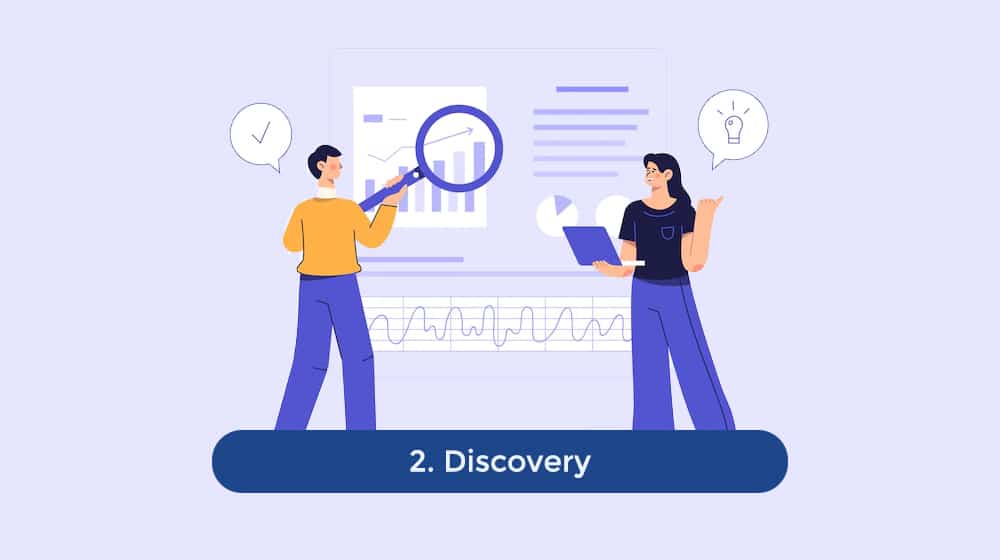
Content marketing here takes two forms. The first is landing pages. Landing pages aren't considered blog posts, but they can have some similarities, as they're both longer-form content. This content is still educational, but instead of educating the user on their problem, you're educating them about how your product can solve it.
You won't always get a sale from this content directly. Users may be too unaware of their options to pull the trigger, so they're likely to research alternatives.
3. Consideration
The consideration stage is where the user researches you in more detail. Blog posts don't necessarily come into play as much here, but technical writing, landing pages, features pages, pricing pages, reputation management, and other forms of marketing very much do.
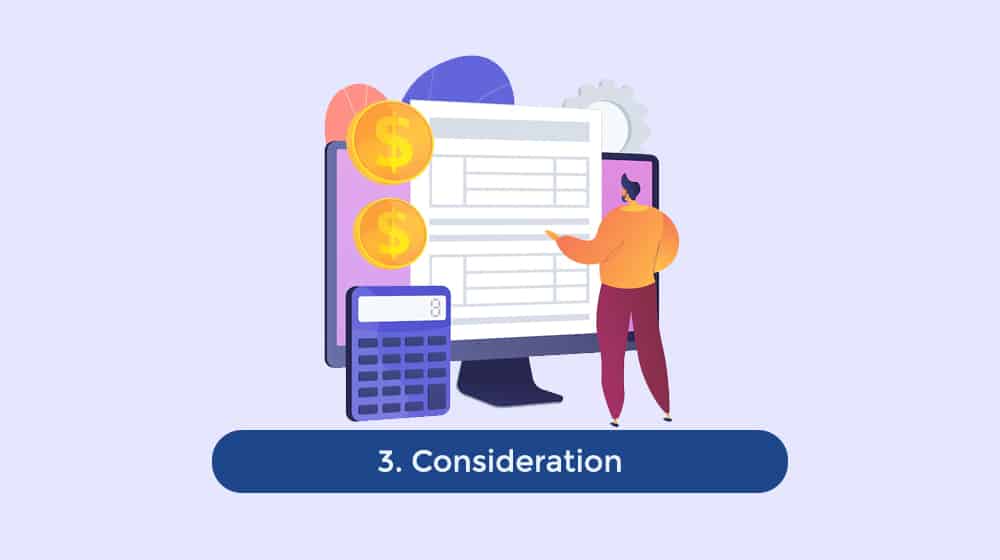
This step is also where the user may decide between different solutions, like a DIY option versus a product they can use versus a service they can hire. For example, someone who needs photography for an event might research the pros and cons of cell phone pictures versus buying a camera versus hiring a photographer.
4. Comparison
Similar to consideration (and often considered part of it), the comparison phase is where the user performs similar research into your competitors.
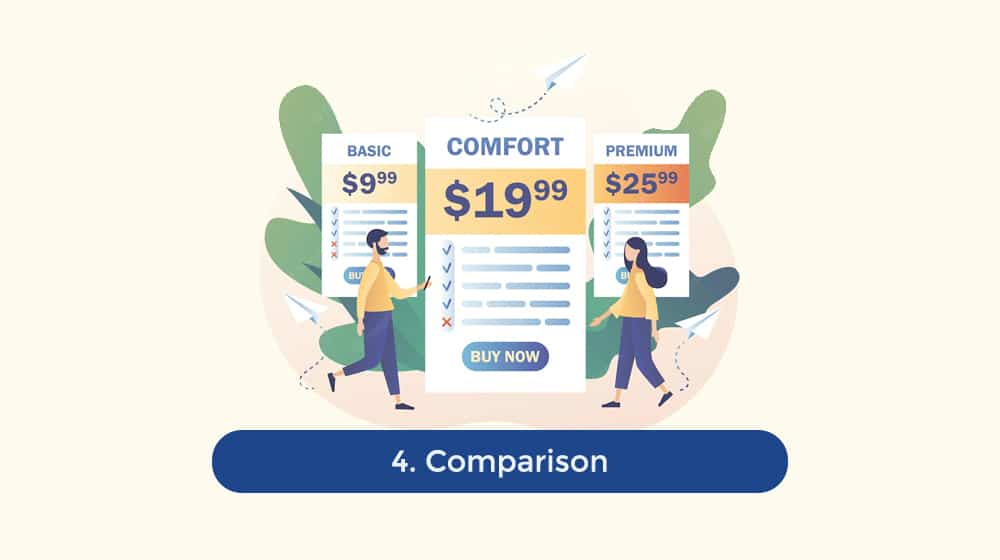
This step is where comparison pages come into play. Blog posts can also do a lot of heavy lifting here. You can write lists of the top companies offering a service (with your position at the top), you can write about how to solve various problems authoritatively, and so on. You want a whole ecosystem of content that positions you as a reliable authority.
5. Purchase
The actual act of making the purchase doesn't have anything to do with content marketing.

The user decides, they go to your website to buy or sign up, and that's that. The purchase decision step is a critical stage to analyze, which is why it gets a unique entry, but that's more about the analytics and the KPIs you harvest than the content you produce.
6. Adoption
Once a user has made a purchase, you want to onboard them. Depending on the product you're selling, this can occur in various ways.

Content marketing involves creating usage guides, tips and tricks blog posts, drip campaigns offering resources, an internal knowledge base, and other content types. This step is also where customer support can come into play, with a staff that can help assist users with configuration, onboarding, setup, and so on.
7. Usage
Content marketing doesn't necessarily play a significant role in usage, but it can be relevant if you write content about how to use your product for specific purposes.
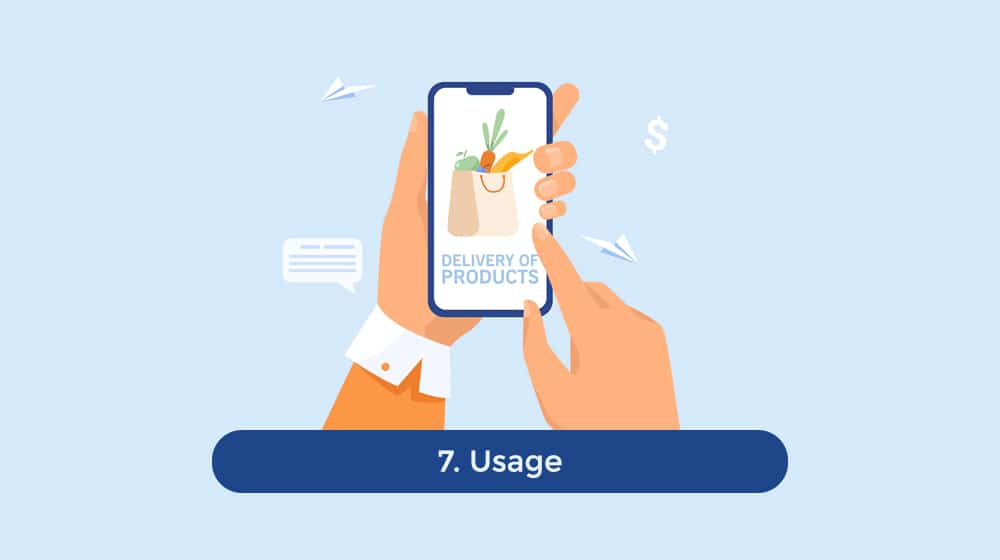
Your onboarding may cover primary uses, but you can cover more advanced or unusual benefits in other forms of content.
8. Support
Support, again, isn't necessarily the realm of content marketing. However, it's usually a good idea for your support to have at least a self-help option, like a knowledge base or a blog category dedicated to solving issues and fixing problems.
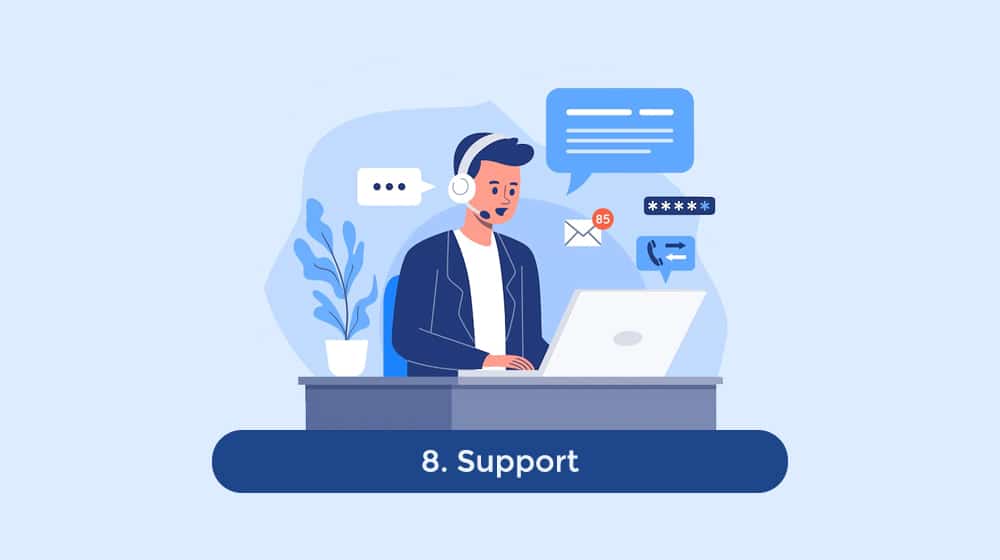
That way, when the user has a problem, they can find resources on your site to use and have the option to contact you for more support if necessary. Being available for your customer's needs is critical for retention and a positive customer experience. This stage also involves listening closely to customer feedback and improving product functionality.
9. Advocacy
For customers that had a positive user experience, advocacy is a natural next stage. After all, we all have to navigate the world of commercialized everything around us, and recommendations from people we trust are among the most powerful ways to spread a product.
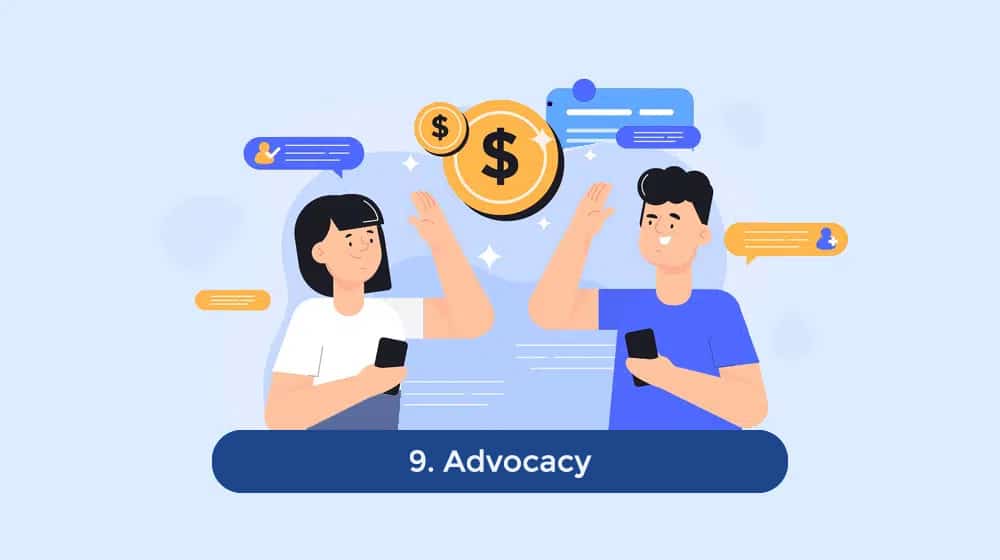
Through affiliate marketing and referral guides, customer loyalty programs, and more, content marketing can work here. However, some of this content marketing won't be yours, it will be the advocate's, so you may want to create style guides, brand reference guides, or media packs to help them out.
Customer Journey Glossary
You've likely heard some of these phases before, and others may be brand new to you.
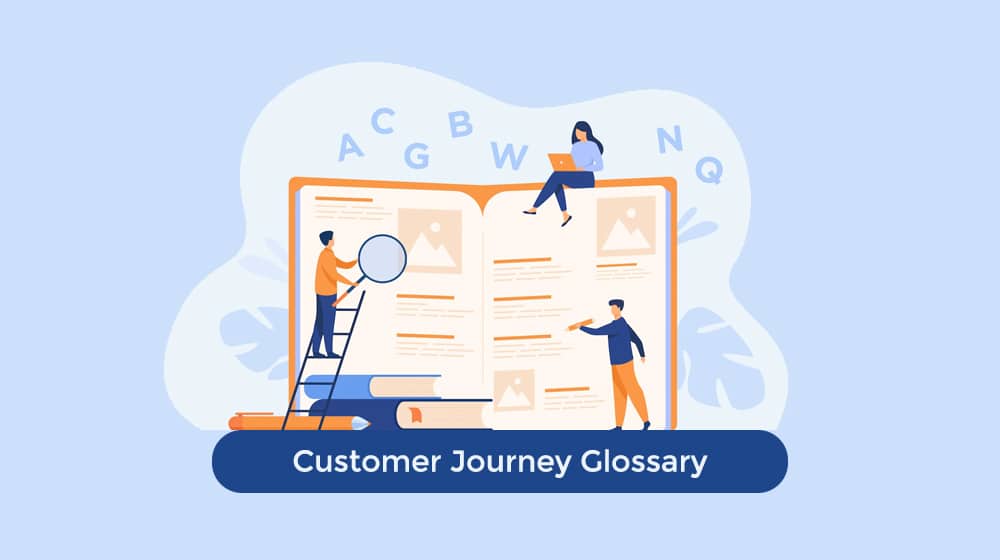
Here are a few terms and phases we've left out from this list to define and demystify them:
- Retention stage: This is a common phase in a customer journey. Customer retention is along the lines of Phase #7, "Support"; after a customer has made a purchase, you provide support to ensure they're happy and remain a customer with your company.
- Decision stage: This is identical to Phase #5, "Purchase." When the customer decides to purchase, they are now a customer and have entered a new phase in the customer journey.
- First impression stage: This stage is identical to Phase #2, "Discovery." The visitor discovers your brand, product, or website for the first time and is aware of you.
- Awareness stage: The awareness stage of the journey is also identical to phase #2, "Discovery," just with a different name.
- Customer Journey Map: Also called a customer journey roadmap, this is an illustration of each of your customer journey phases. This chart can help train and educate the members of your team to help them understand how a new visitor becomes a customer and all of the steps in between.
- Touchpoints: Touchpoints are moments in time when visitors or customers might interact with your brand, and they can be from users who are at different stages of the customer journey. This may be a YouTube ad that they watched, an email they received, a word-of-mouth recommendation, or even a "Thank you for your order" email after deciding to purchase.
As you can see, there are a few different nicknames for some of these stages, but the definition remains the same.
Putting the Pieces Together
The stage of the user journey is just one aspect of content marketing. User intent, keywords, and the buyer persona are also relevant.
I always say that writing a blog post is just about the easiest part. A successful blog requires a ton of groundwork, both in one-time or annual research and in topic-specific, keyword-specific, and persona-specific definitions.
That's about all the help I can give you in generic terms. The trouble with this is that it heavily depends on your business, niche, and target audience. I have done a ton of research into my niche and industry, product, keywords, metrics, and all the rest, but it would only be helpful to my direct competitors if I shared it. Your job is to define all of it for yourself. Or, of course, hire me to handle your content marketing strategy for you and have me do it—your choice.



 30 Second Summary
30 Second Summary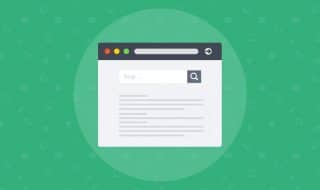
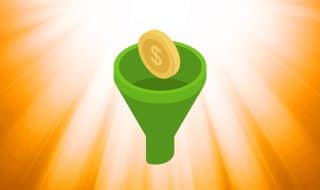


Comments